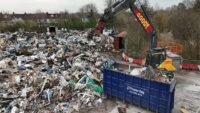Monitoring of Dust air is an essential process in many industrial settings. It involves measuring the levels of dust particles in the air to ensure that they do not exceed the recommended limits set by regulatory bodies. This article discusses the importance of Monitoring Dust air in industrial settings.
What Is Monitoring Of Dust Air?
Dust air monitoring is the process of measuring the concentration of dust particles in the air. This is typically done using specialized instruments that can detect and quantify the amount of dust present. monitoring is an important tool for assessing the risk of exposure to dust in a variety of settings, including workplaces, construction sites, and residential areas.
Importance Of Monitoring Of Dust Air
Worker Safety
Monitoring of Dust air helps to ensure the safety of workers by identifying areas with high levels of dust particles. This information can be used to implement measures such as improved ventilation, personal protective equipment, and regular cleaning to reduce the risks associated with exposure to dust.
Regulatory Compliance
Industrial facilities are subject to regulatory requirements regarding the levels of dust particles in the air. Dust air monitoring helps to ensure that these requirements are met, avoiding fines and other penalties that can result from non-compliance.
Environmental Protection
Dust particles can have a negative impact on the environment, leading to soil and water pollution. Monitoring of Dust air helps to identify areas with high levels of dust particles, allowing for the implementation of measures to prevent environmental pollution.
Equipment Maintenance
Dust particles can also damage equipment, leading to increased maintenance costs and downtime. Monitoring of Dust air helps to identify areas where dust particles are causing damage, allowing for the implementation of measures to prevent equipment damage.
Product Quality
Dust particles can also affect product quality, particularly in industries such as pharmaceuticals and food processing. Monitoring of Dust air helps to ensure that product quality is maintained by identifying areas where dust particles are present and implementing measures to prevent contamination.
How To Perform Monitoring Of Dust Air
Performing Monitoring of Dust air is essential to ensure that the air quality in a workplace or industrial setting is safe for workers and meets regulatory standards. Here are the steps involved in performing Monitoring of Dust air:
Identify The Sampling Locations
Identify the areas where dust levels are likely to be high. These may include areas near dust sources such as manufacturing processes, construction sites, or mining operations.
Choose The Monitoring Method
Various methods for monitoring dust levels in the air include real-time monitoring devices and passive samplers. Choose the method that is most appropriate for your workplace and regulatory requirements.
Install The Monitoring Equipment
Install the monitoring equipment in the identified sampling locations. Make sure that the equipment is installed correctly and calibrated according to the manufacturer’s instructions.
Run The Monitoring Equipment
Once the monitoring equipment is installed, run it for the required period to collect air samples. This may range from a few hours to several days, depending on the monitoring method and regulatory requirements.
Collect And Analyze The Samples
Once the monitoring period is complete, collect the samples from the monitoring equipment and send them to a laboratory for analysis. The laboratory will analyze the samples to determine the levels of dust and other particulate matter in the air.
Interpret The Results
Once the analysis is complete, interpret the results to determine whether the levels of dust in the air are within regulatory limits. If the levels are too high, take steps to reduce dust levels in the workplace.
Conclusion
Dust air monitoring is a crucial process in many industrial settings. It helps to ensure the safety of workers, regulatory compliance, environmental protection, equipment maintenance, and product quality. Industrial facilities should prioritize dust air monitoring to ensure that they operate safely and sustainably.




